What it’s like to drive the most remote highway in the world
The Pamir Highway traverses the wild, lonely landscapes of Tajikistan and Kyrgyzstan. Megan Eaves drives it
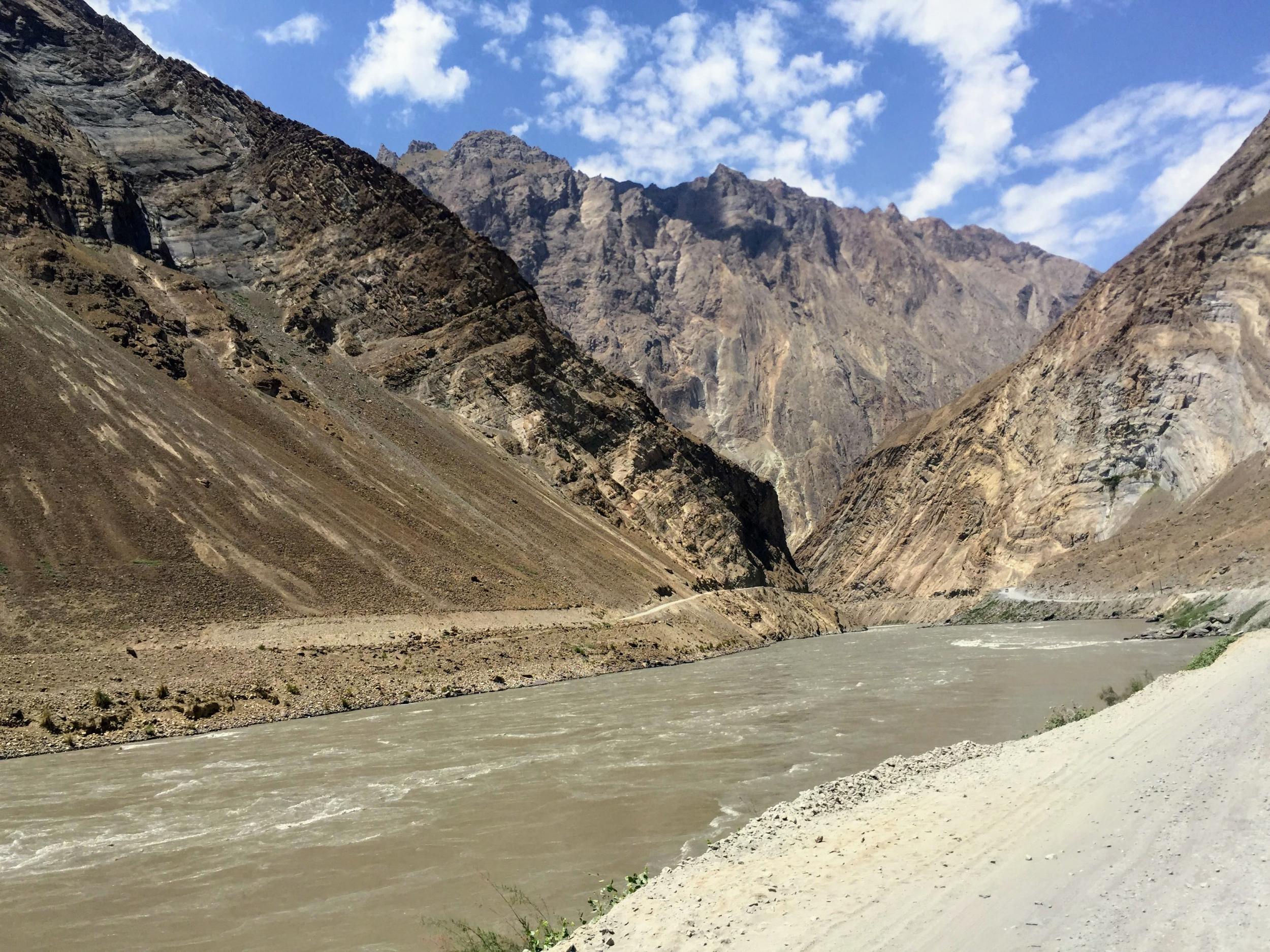
Bump, bump, bumpbumpbump.
Lurch, bounce.
My head bobs wildly, chin hitting chest and swaying from side to side, as I try to stay upright in the back seat of a Land Cruiser that’s going at speed over a gravel track, leaving behind a cloud of dust. I’m somewhere in the depths of Tajikistan, and outside my window, arid mountains rise into treeless peaks as we carve our way through a rough, brown, rocky canyon.
We approach a stream gushing impulsively out of a red-rock cliff face; it’s washed away part of the road and instinctively I reach for the plastic handle above my head and hang on for dear life, a process that is repeated continuously over the course of two weeks driving over mountain passes and across unmarked fields, through this high, dry, dusty land.
Driving the roof of the world
For many, central Asia conjures the poetry of Samarkand in Uzbekistan and the blue-tiled domes of its Silk Road monuments. The Silk Road was the central artery that connected China to Europe until the 15th century, and its modern-day branding is impossible to escape in this part of the world. The Silk Road is romance and travel history; it truly is iconic.
But I’m driving a different road through central Asia: the Pamir Highway. Unlike the Silk Road, which was a series of dozens of interconnecting trade routes crossing two continents, the Pamir Highway is a single, definable road. Officially the M41, it was a great Russian thoroughfare that connected the Soviet empire to its most southerly capital: Dushanbe in the Tajik Soviet Socialist Republic. It crosses the vast, wild, lonesome landscapes of Tajikistan and into Kyrgyzstan, promising adventure at every hair-raising mountain bend.
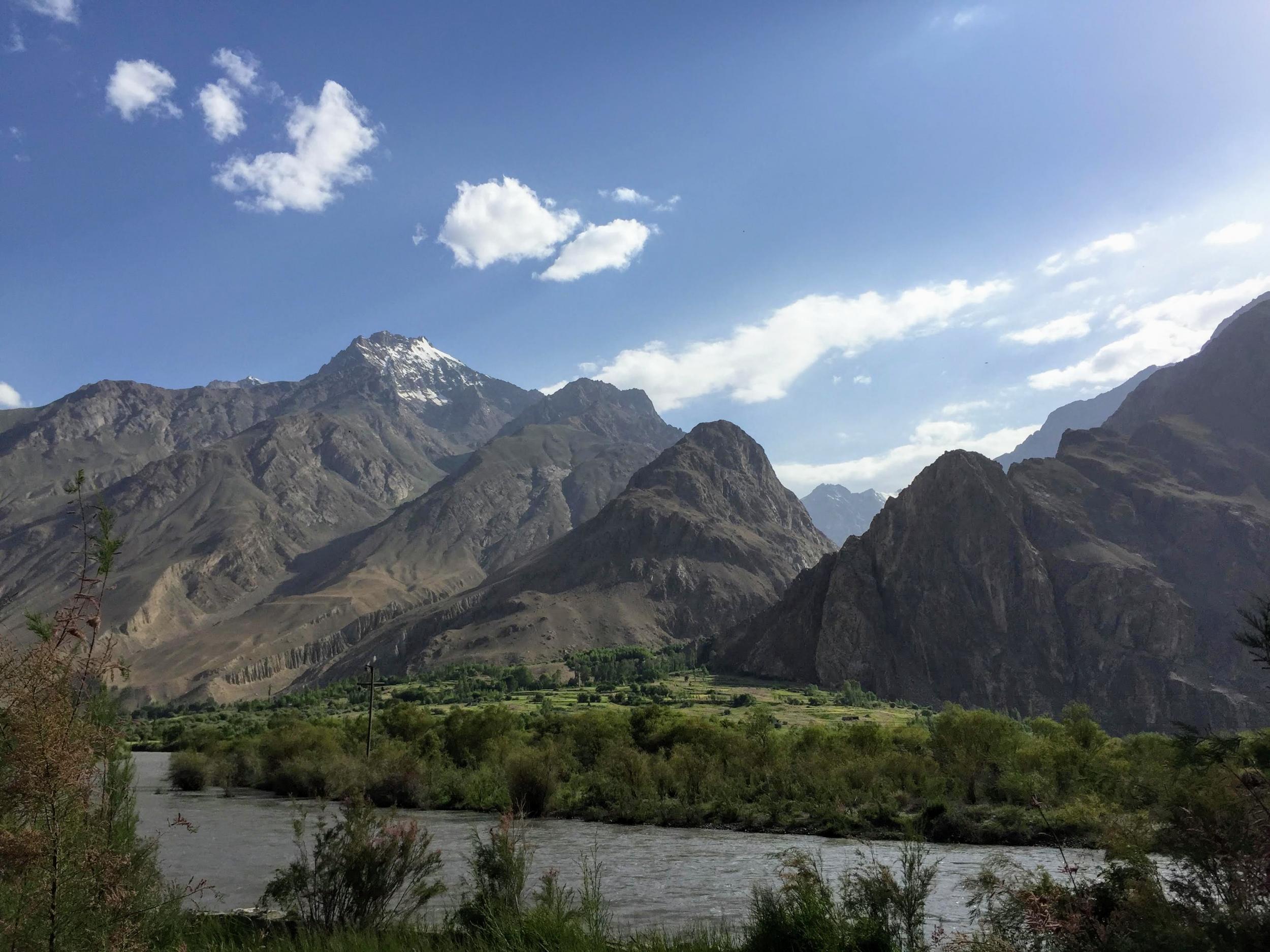
I’ve set out to drive this under-loved road because I want to know how it went from being a Soviet expressway to a little-used dirt track; to hear its story and the stories of the people who live along it, and to understand why a road that passes through some of earth’s most surreal and stunning landscapes – landscapes to rival the Himalaya and the Andes – is so often omitted from travellers’ bucket lists.
A Soviet legacy
Central Asia is having a bit of a moment right now – the region continues to open new visa-free schemes and flight routes – but horseshoe-shaped Tajikistan is less developed than its neighbours and remains all-but-unknown to a vast portion of the world. A visa is still required (albeit an e-visa) and flight routes are long and generally require a connection.
The Pamir Highway is the second highest paved road in the world, although “paved” is a loose term. It crosses five mountain passes above 4,000 metres, including the breath-stealing, moon-dry Ak-Baital Pass, which at 4,655m is the road’s highest point. Though heart-stoppingly beautiful, driving over it certainly begs the question of why anyone would build a road here in the first place.

In the 1970s, at the peak of Soviet influence, the Pamir Highway was a critical supply route for ferrying out natural resources from Pamiri mines. It took only a few hours to travel the highway’s westernmost 375 miles from Dushanbe to Khorog. But when Tajikistan achieved independence in 1991, in the wake of the Soviet collapse, there was less need to reach the Pamir. As government subsidies for its upkeep vanished, the road gradually fell further and further into the state of bumpy disrepair you drive over today. The same distance now takes a full two days in good weather – three if there are rock falls.
Dushanbe & the Western Pamir Highway
You can drive the Pamir Highway in either direction, but I’m starting at its western end, in the Tajik capital of Dushanbe. The city makes for a nice base to orient yourself for the long road ahead, and is a good place to see where Tajikistan has been, and more importantly where it’s headed.
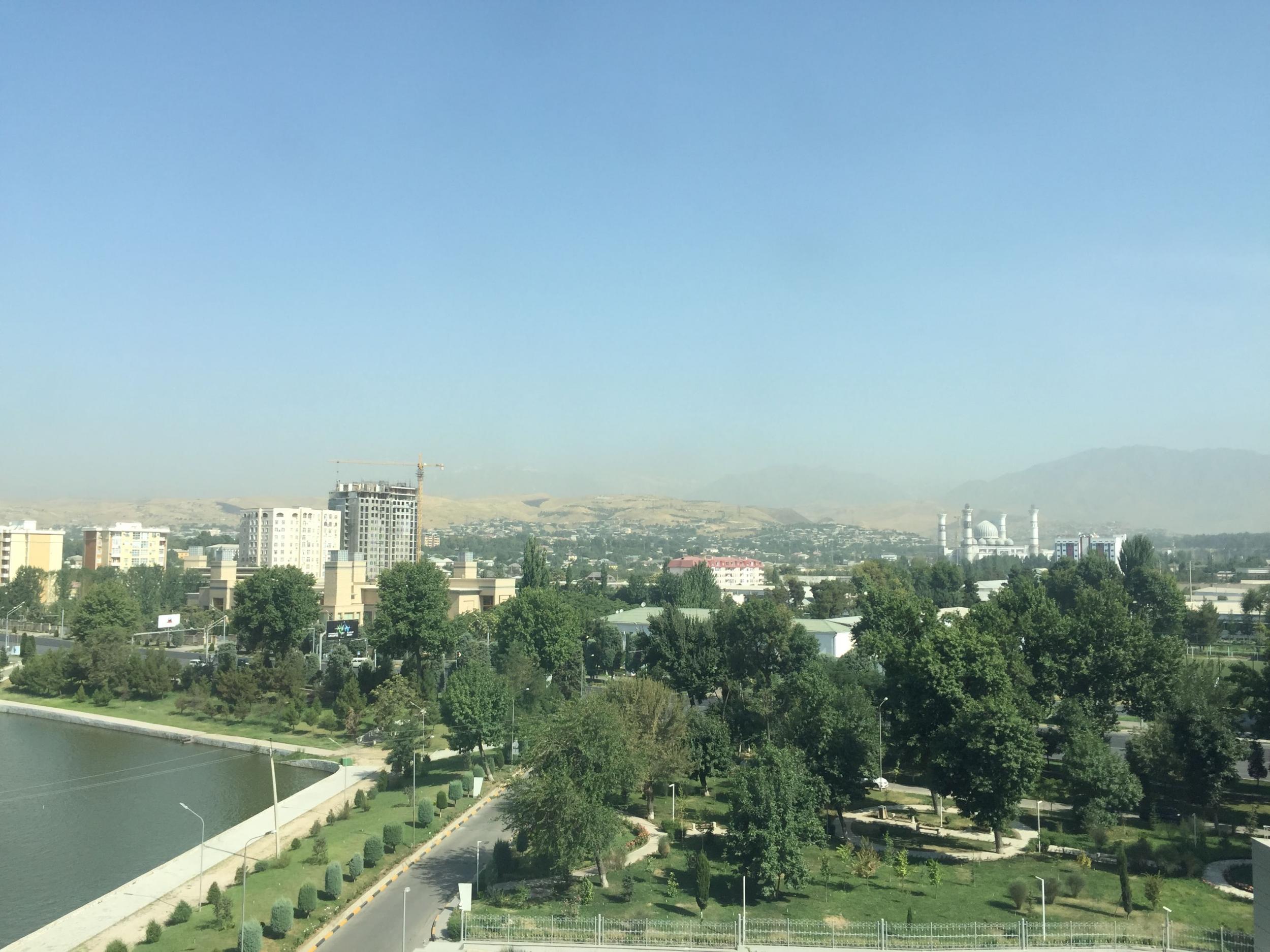
A stroll through the city’s main green space, Rudaki Park, leads past the type of quirky landmark I love: the world’s second-tallest flagpole. The 165m-high spire was ousted from its superlative title by a pole in Saudi Arabia, but this one still results in satisfying neck-crane. It’s a baking, 43C summer’s day, so I head to the National Museum of Antiquities, where the ticket agent smiles and motions for me to remove my shoes. I plod the worn carpets sock-footed, ogling dusty glass cases of centuries-old archaeological finds, including a 13m-long, sixth-century reclining Buddha statue uncovered in southern Tajikistan.
On to Khorog
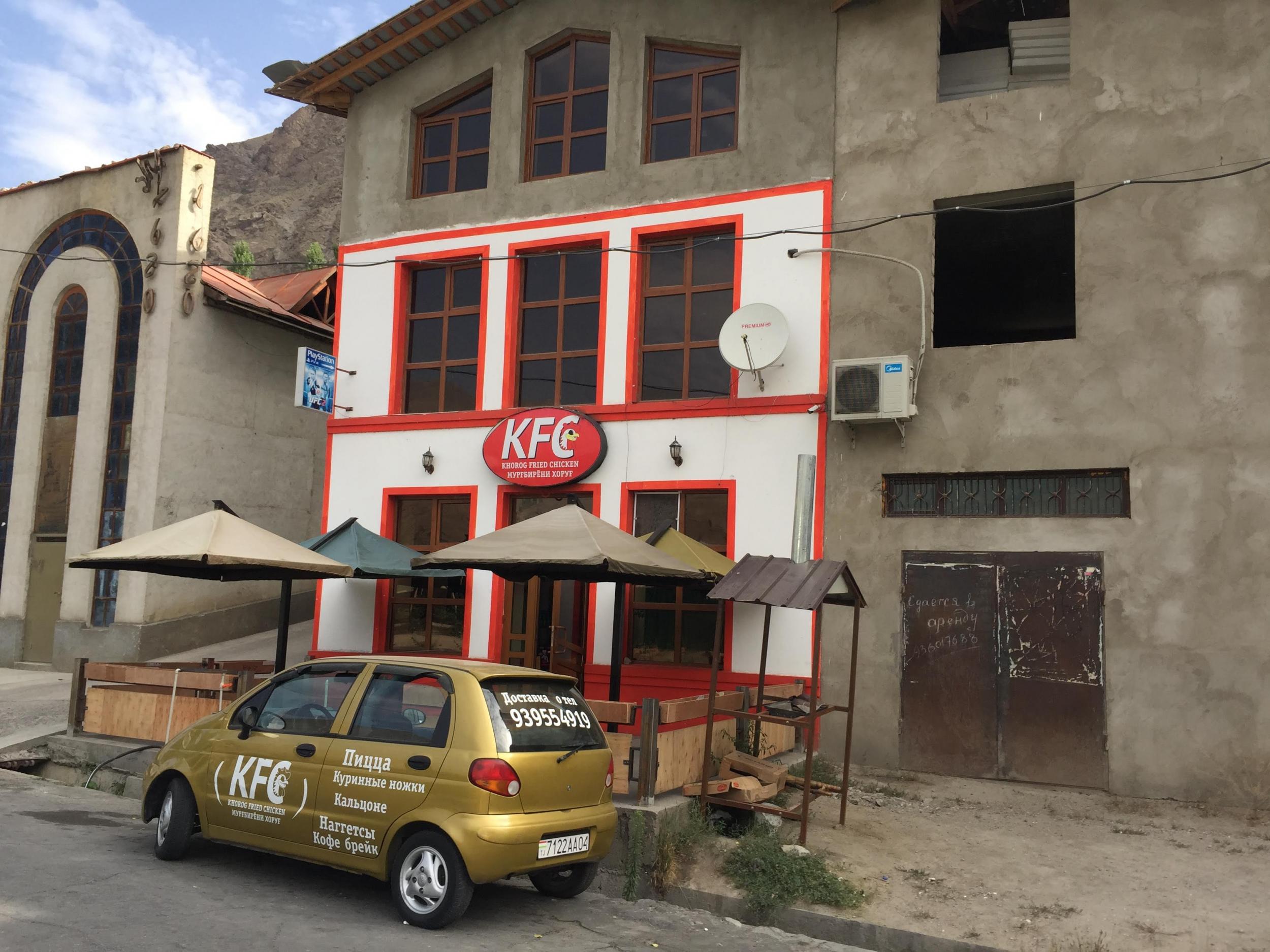
The two days between Dushanbe and Khorog – a pleasant east-west gateway city and capital of the eastern Gorno-Badakhshan Autonomous Region (GBAO) – are the hardest. The largely unsurfaced road is a snaking track carved into steep cliffsides above the Panj River, which also serves as the border with Afghanistan. Rock falls are frequent, stopping traffic entirely until a truck can come to shove the errant boulders off into the river.
Khorog is something of an oasis for travellers on the Pamir Highway. A city of only 30,000, it feels like a metropolis after the bumpy ride from Dushanbe. Most people, myself included, plan a few extra days to lounge in a soft bed – like the ones at rustic-luxe Serena Inn – sip cold beer by the river, and avail of the internationally minded food options. Along the town’s main street are KFC (Khorog Fried Chicken, that is) and MacDolans, but the crown jewel is Indian restaurant Delhi Darbar, where luxurious chicken tikka masala and crispy garlic naan are a welcome change from days of stodgy plov (Tajik rice pilaf) and manty (lamb dumplings).
Diversions through the Wakhan
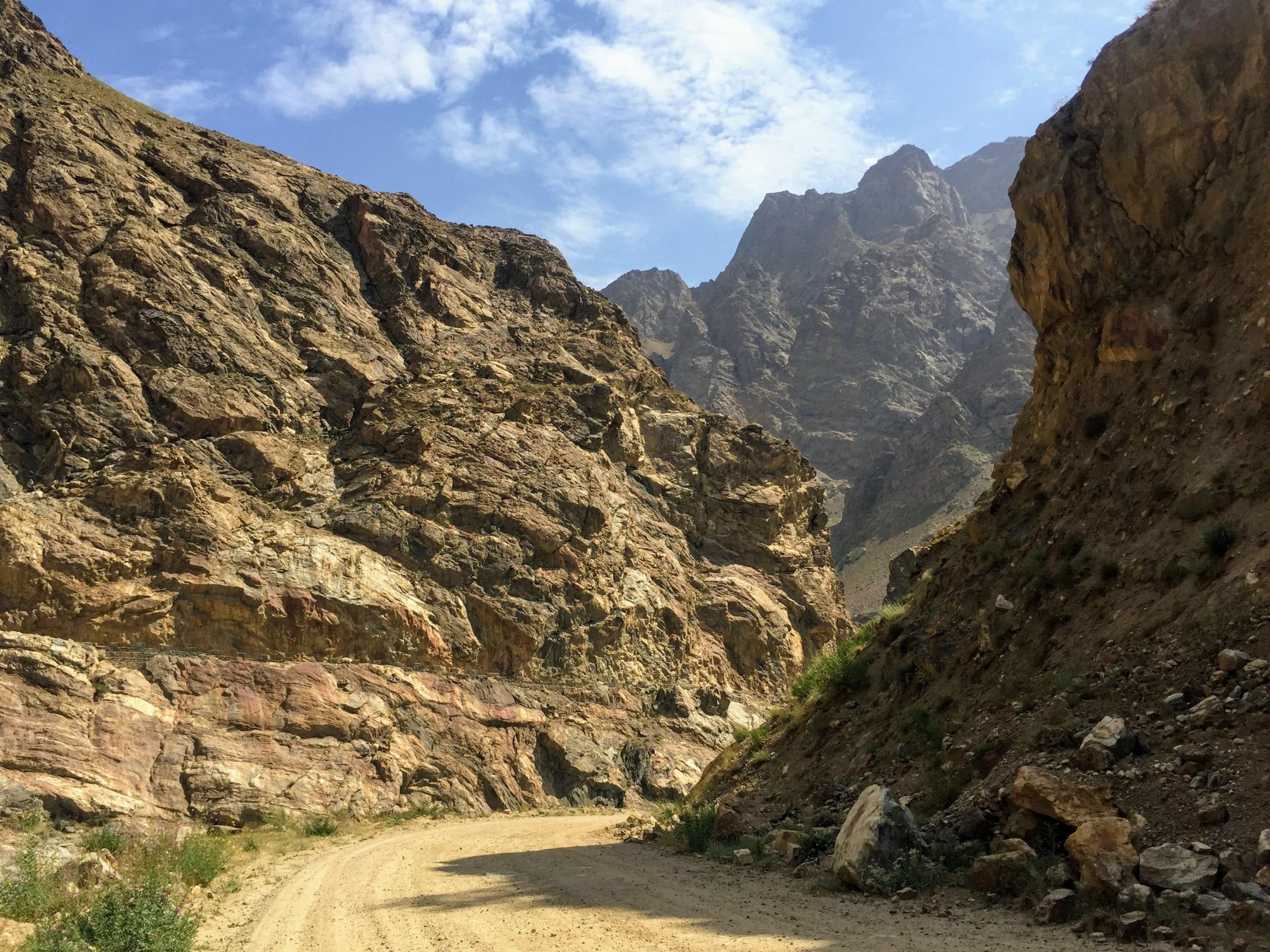
After a few days relaxing in Khorog, my companions and I head east up the Wakhan Corridor.
Like most who traverse the Pamir Highway, we’ve hired a local driver who knows the roads and maps, and has a 4WD appropriate for extended rough terrain.
The Wakhan Corridor is a strange thumb of Afghan land that juts east, forming the border with Tajikistan. A wide valley between the Tajik Pamir and the Hindu Kush ranges, this odd, remote strip was parcelled out during the Great Game, an early 20th-century geopolitical conflict that saw Russia and Britain vie for influence in central Asia.
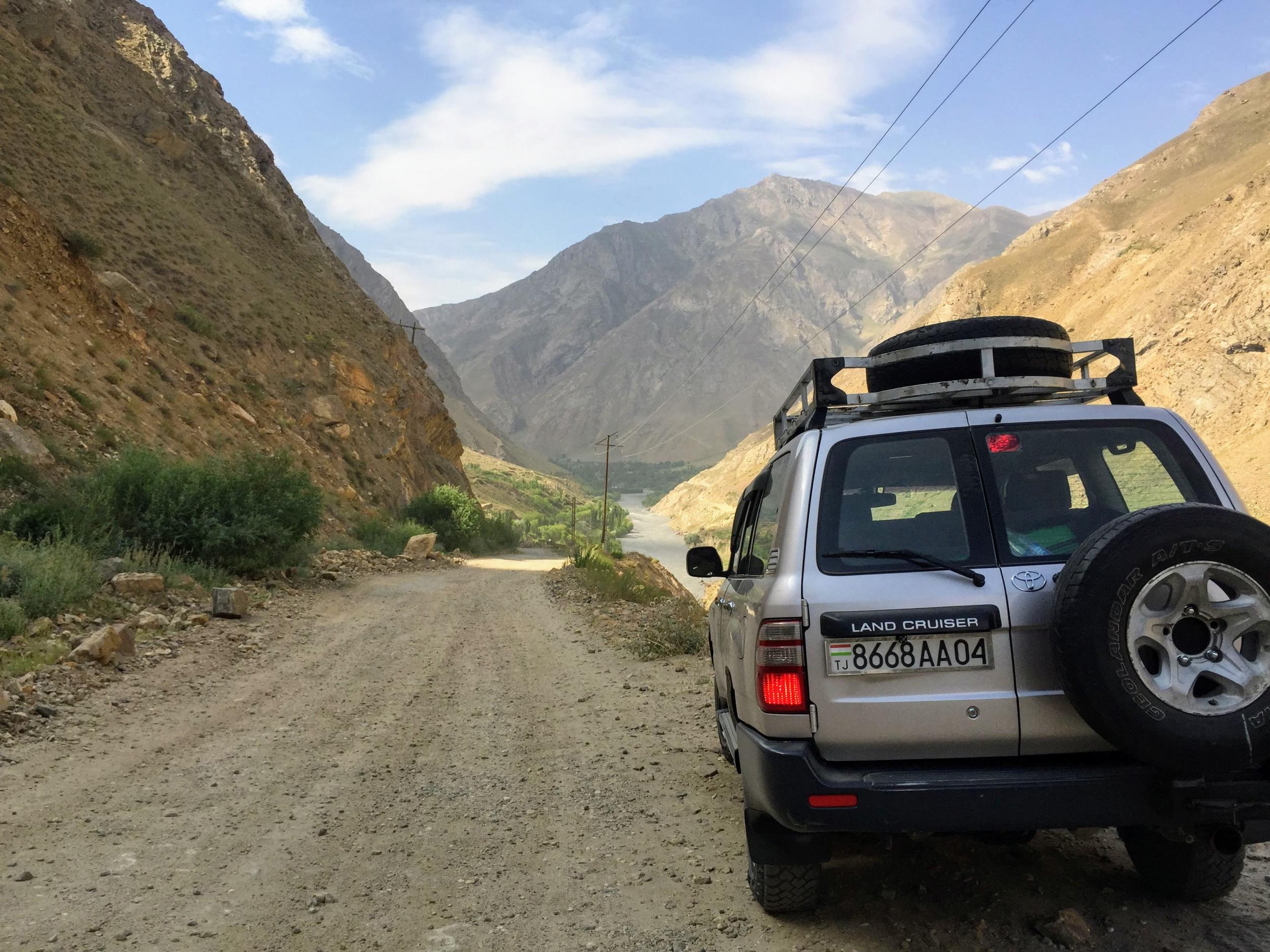
We follow an unnumbered road along the gushing, muddy torrent of the Panj River. Though technically a diversion from the official Pamir Highway, this three-day detour has some of the most sweeping mountain scenery of the whole trip. And a chance to gaze across at Afghanistan, which lingers tantalisingly close the entire way.
In the evening, we settle into one of many friendly but basic homestays that define our nightlife over the course of the drive. This one has the luxury of a hot shower, which rinses off the dust that seems to have seeped into the Land Cruiser all day. Hair wet, I strike out on foot from the inn’s courtyard, passing a few braying donkeys and an old shepherd who eyes me with little curiosity, and then stroll up a track leading along an irrigation ditch, through a grove of walnut trees silhouetted by Afghan peaks. The sun is now below the mountains, the sky a dusky pink – I stand and listen to silence until dark has settled over me like a blanket.
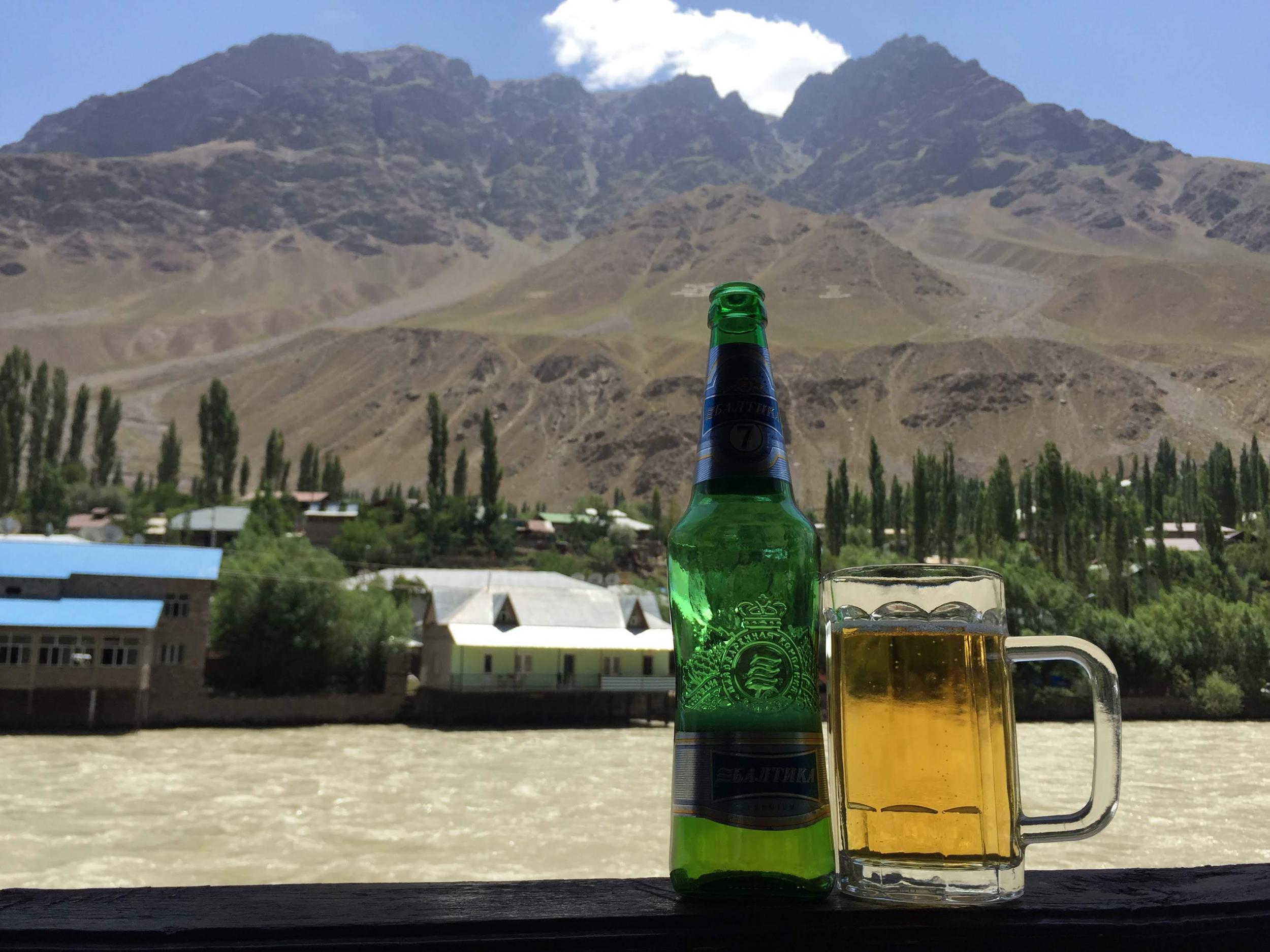
Later, after a huge dinner of laghman (noodles with meat and tomato sauce) and fresh melon, we bundle into jackets to combat a surprising summer chill and out into a field, where a pile of firewood provides makeshift seating for a view of the stars. It’s late August and the annual Perseid meteor showers are streaking through the Milky Way, which blazes in a bright ribbon across the sky.
In search of Marco Polos
The following day, we strike out across the vast and uninhabited Zorkul Nature Reserve. Stopping at an army checkpoint, the driver hands over permits we’ve obtained to access this protected area, and from this point the “road” becomes something of a fluid concept, at some points disappearing altogether and forcing us to drive straight across open fields and ford wild streams while curious marmots pop their heads above ground to see what the commotion is. The altitude soars quickly to 4,200m, and when we stop for a picnic lunch overlooking pristine Zorkul Lake, just walking a few steps makes my head spin.
We’re aiming tonight for the Murgab Company, a lodge that caters to trophy hunters under the auspices of conservation. For us, it’s the only accommodation option for hundreds of kilometres, but hunters come from all over the world in search of the rare Marco Polo argali, a near-threatened and very shy species of curly-horned mountain sheep native to this part of Tajikistan. The species came under threat from poaching (mainly for meat), and the Murgab Company claims to have conservation as its remit by charging huge sums of money to trophy hunters and then investing these returns back into anti-poaching efforts within the local communities. A case of sacrificing a few to save many?
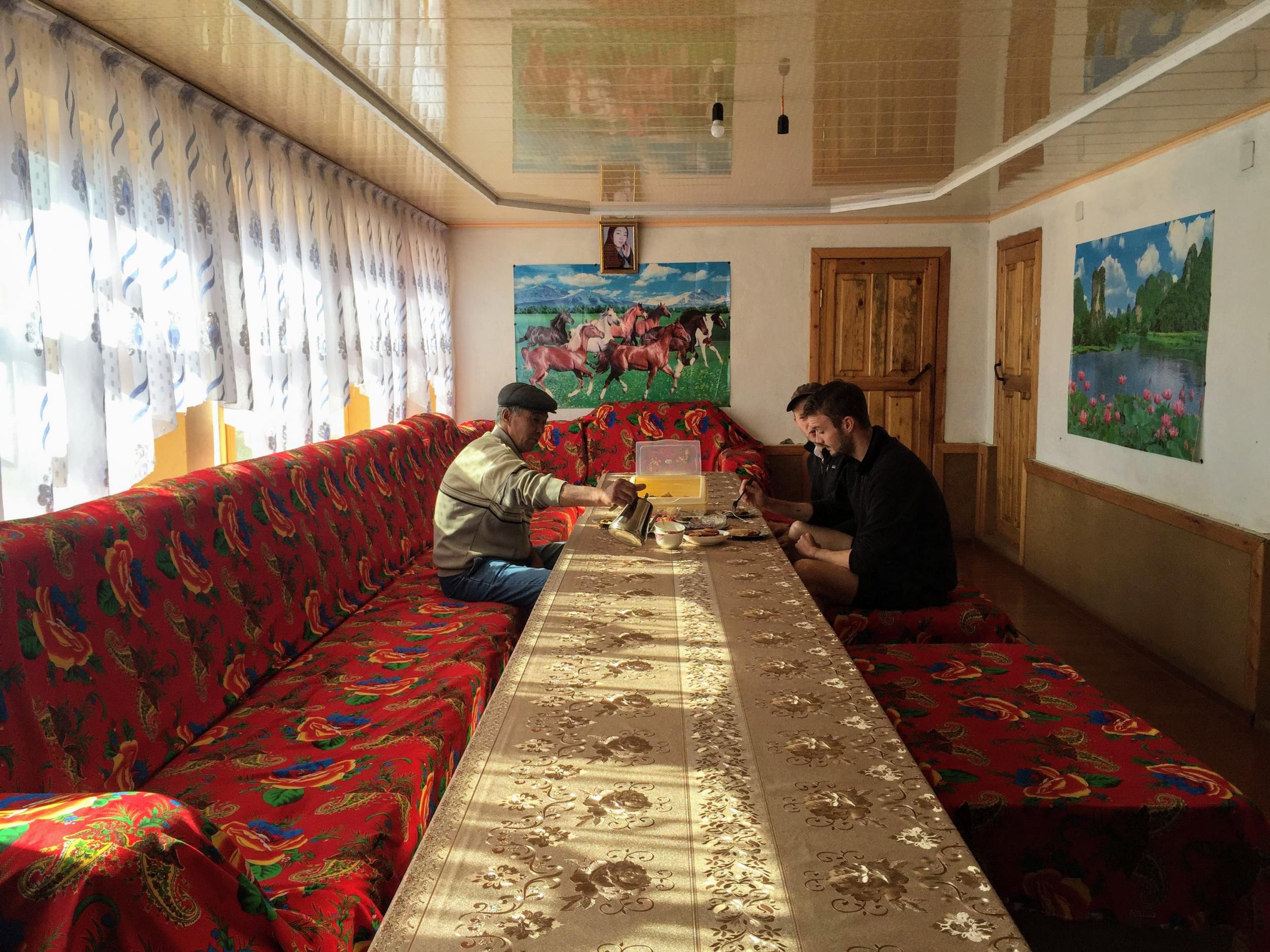
I find this idea difficult to reconcile, especially eating dinner under photos of camouflage-clad, rifle-wielding hunters and taxidermied heads, but there is some evidence to suggest that trophy hunting as conservation is a justifiable endeavour. Since 1990, when regulated hunting was legalised in Tajikistan, the population of Marco Polo sheep has risen significantly, with some reports suggesting populations have more than doubled. According to a report by the United Nations Economic Commission for Europe, in Tajikistan, trophy-hunting profits have allowed for the establishment of “a reliable monitoring system to inform quota-setting; more realistic fees; a more transparent legal framework that clarifies who is allowed to hunt what in which area; improved hunting law enforcement and benefit-sharing of hunting resources”.
The next morning, with heads still aching from altitude sickness, we rise early and set off again onto the plains northeast. The sun climbs across brown rock formations and eerie peaks that lift like ships’ sails from a flat, lunar panorama. Suddenly, a plume of dust puffs off to the right: it’s a herd of Marco Polos racing across the landscape at majestic speed, and then off behind a mountain, away from our watchful eyes, and hopefully, rifle sights.
Murgab and Karakul and the Kyrgyz border
No matter which way you drive the Pamir Highway, reaching Murgab is a rite of passage. The very definition of a lonely trucker outpost, Murgab is a collection of dusty streets, oil-stained auto repair shops and stores selling dry goods and snacks cobbled from trucks passing via Kyrgyzstan, Russia and China. Sheep and cattle roam untended through a makeshift market made of shipping containers. The air is breathtakingly thin – at 3,650m, Murgab sits at exactly the same altitude as Lhasa, Tibet.
The Pamir Hotel serves as a traveller hub and provides hot portions of plov and soup, as well as rooms should you be unfortunate enough to need to stay overnight. While we fuel up on petrol, I gaze out over Murgab’s low-rise mud houses and a sense of deep admiration washes over me for the 4,000 people who spend their lives in such a beautiful and desolate place.
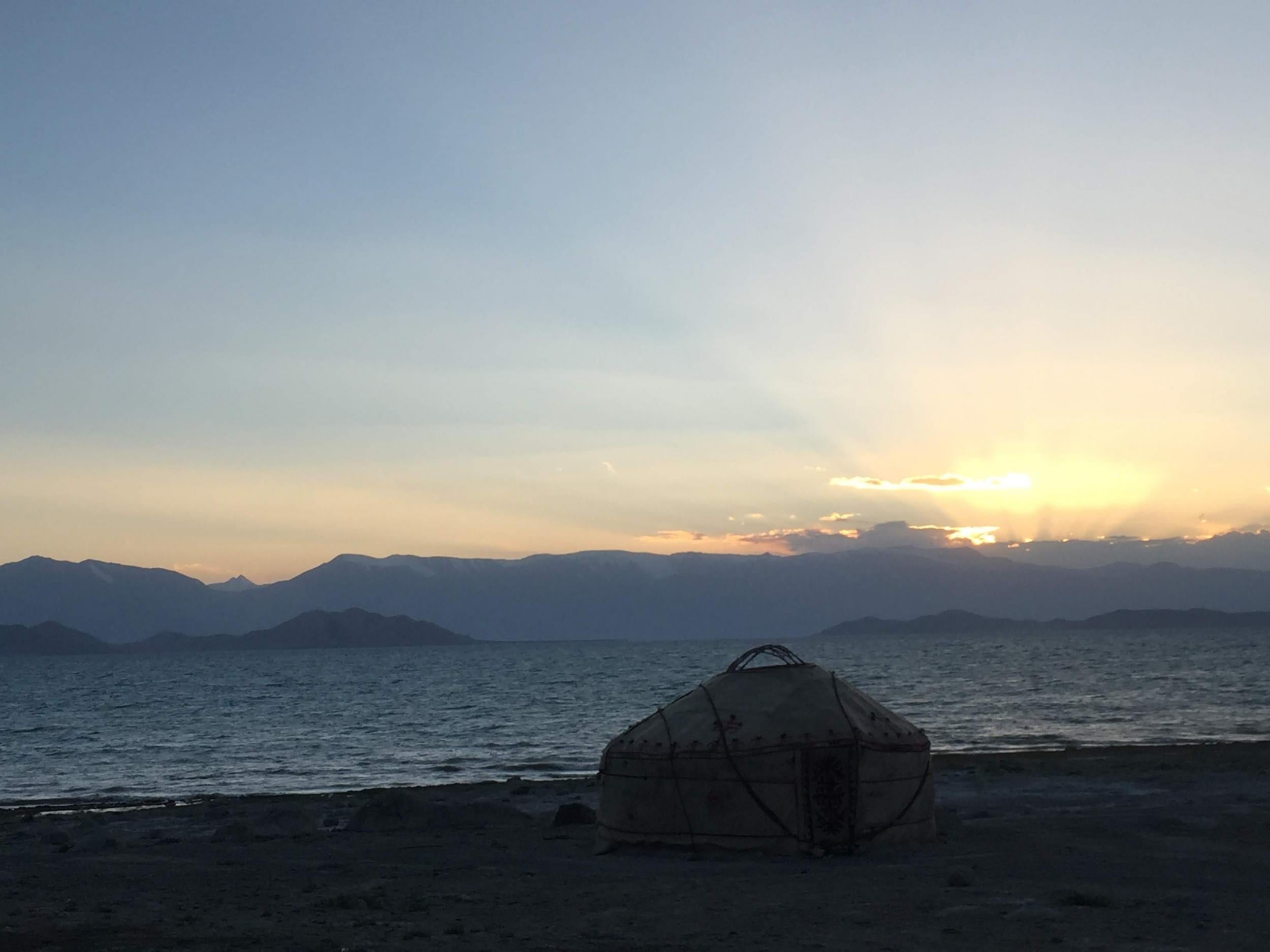
From Murgab, the Pamir Highway cuts north, following the border with China. For much of the way, a huge chain-link fence runs alongside the road, leaving little doubt where Tajikistan ends. Beyond, the Pamir range rises in its final flourishes to heady peaks like Muztag Ata (7,546m) and Kongur (7,719m) before stretching out into the flatlands of the Taklamakan Desert in China’s far west Xinjiang province.
It’s 180km from Murgab to the border with Kyrgyzstan, but tonight we’re stopping earlier at ethereal Karakul, a vast saline lake fringed by snow-capped mountains and fronted by a tiny village of whitewashed mud huts. At 4,000m, it’s higher than Bolivia’s fabled Lake Titicaca, and is so salty as to be almost unnavigable by boat, although every summer a quirky sailing festival – the Roof of the World Regatta – sees keen sailors and kitesurfers try.
One of my travelling companions and I have our eye on a wild swim, and despite frigid, gusty winds, we don our swimsuits and pick our way barefoot across spongy marshland and salt crust to the lakeshore, where the water is lapping into wild waves. We splash about, whooping and gasping from the freezing temperatures, while our driver and a group of gathered locals stare on with incredulity at this most English display of “fun”.
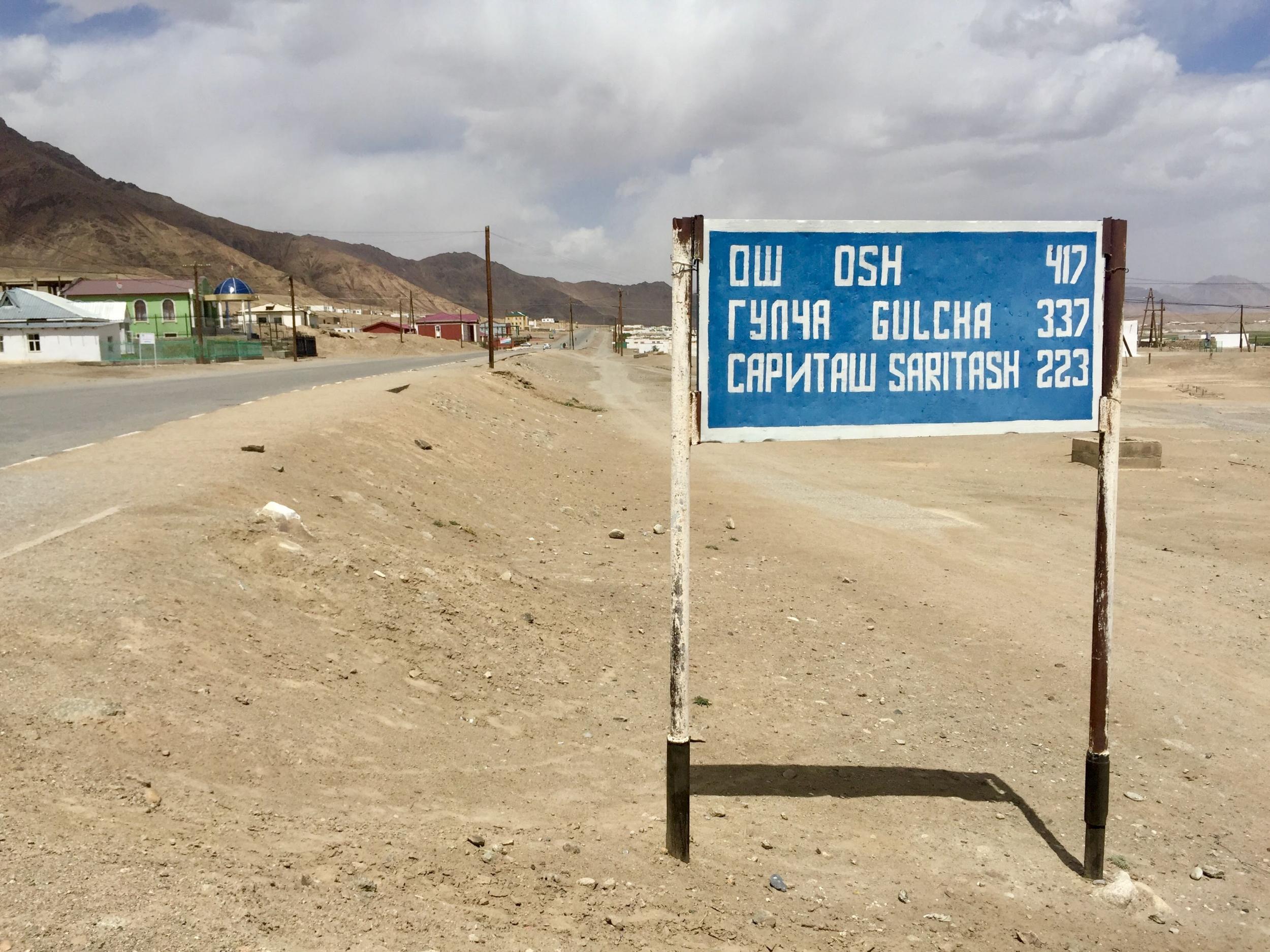
Later, we wrap into thick coats and boots and pop open cans of lager carried all the way from Khorog, and sit on a rocky outcropping below the village to watch the sunset over the lake. The dropping daylight covers a cluster of nearby yurts in a warm orange glow, and the sky fades to azure as stars and planets begin to twinkle like hanging gemstones.
Tomorrow, we’ll drive again, bumping up over Kyzyl-Art Pass into Kyrgyzstan and finally onto Osh. But tonight, I shiver and look at the glittering sky one last time. The story of the Pamir Highway is one of the undulations of time and travel and how everything moves in cycles.
Once the centre of the world, now a forgotten outpost, and some day soon renewed again.
Travel essentials
Getting there
Fly to Dushanbe either via Kazakhstan with Air Astana or via Istanbul on Turkish Airlines for around £650.
Visiting there
Passport holders from 121 countries, including the UK, can apply for a 45-day e-visa through the official website. To travel the Pamir Highway, you must also apply for a GBAO permit at the same time for an additional cost.
A car and driver can be chartered from around £75 per day, less for self-drive cars; check with Caravanistan or Indy Guide to book independently. Kalpak Travel offers an 18-day package tour for £2688 per person.
Join our commenting forum
Join thought-provoking conversations, follow other Independent readers and see their replies
Comments